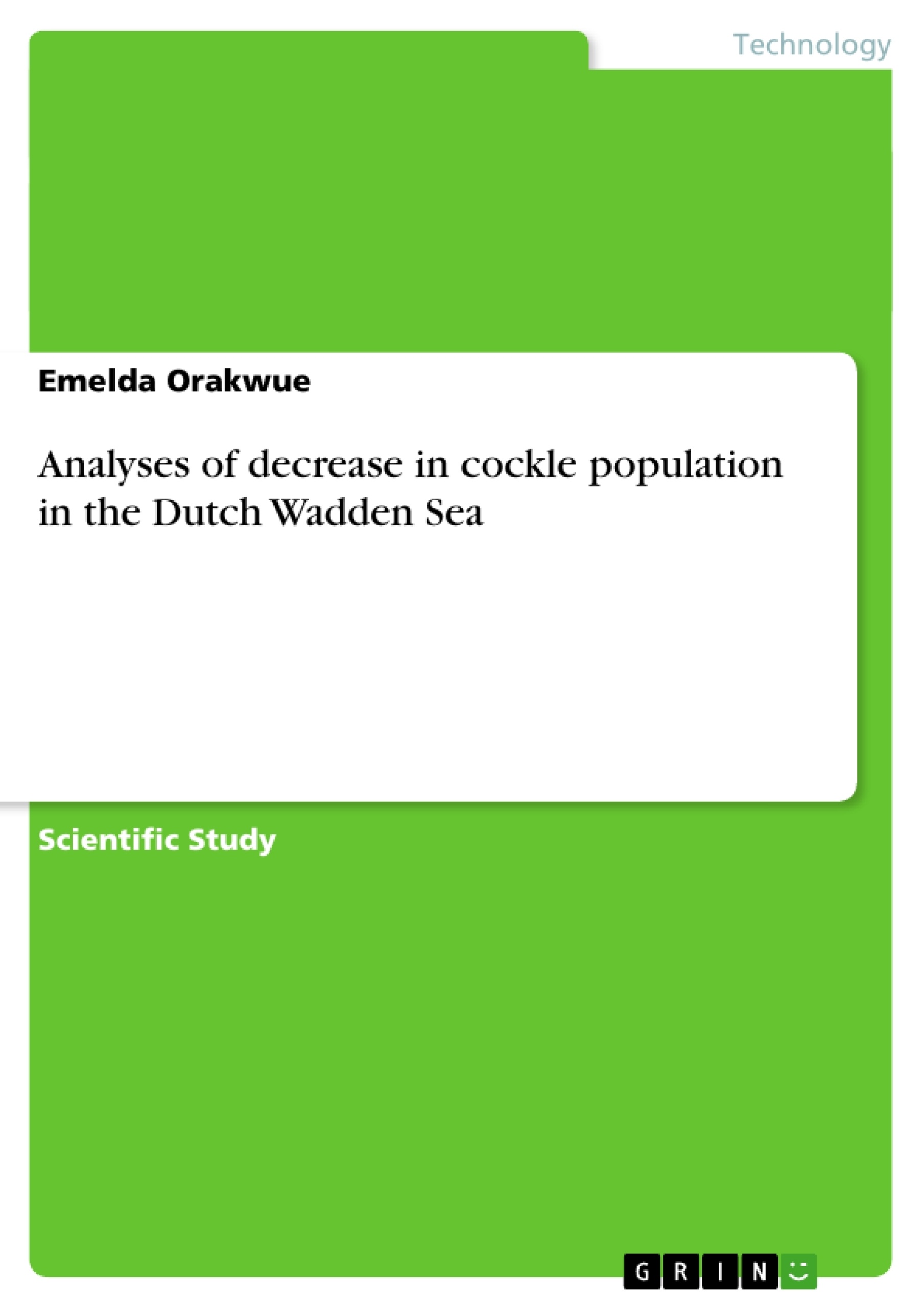Cockle fishing in the Dutch Wadden Sea was practiced from 1960 to 2005. Cockles can be harvested manually, but the technique used nowadays for fishing is called suction dredging. This technique lifts cockles and sediments up, after which the cockles are separated from the sediment and the sediment is returned to the sea. This leads to a loss of silt from the sediment, leaving behind only the coarse sediment particles.
Inhaltsverzeichnis (Table of Contents)
- Introduction
- Method
- The conceptual model of the study case
- The problem tree
- Analyses of ecosystems functions and services using Millennium Ecosystem Assessment and TEEB study
- Analyses of the drivers of change on the Dutch Wadden Sea
- The DPSIR (Drivers, Pressure, State, Impact and Response)
- Stakeholder analyses of the Dutch Wadden Sea
- Analyses of the human well-being and livelihoods
- Presentation of result
Zielsetzung und Themenschwerpunkte (Objectives and Key Themes)
This study aims to analyze the decline of the cockle population in the Dutch Wadden Sea and its economic and environmental consequences for the ecosystem. The analysis covers the environmental effects of the decline, socio-economic impacts, and the role of various stakeholders in the system.
- The decrease in cockle population and its causes
- Environmental impacts of the decline on biodiversity and ecosystem functions
- Socio-economic impacts on fishing, tourism, and human well-being
- Analysis of drivers, pressures, and responses to the problem
- Assessment of the Dutch Wadden Sea ecosystem functions and services
Zusammenfassung der Kapitel (Chapter Summaries)
The introduction provides background information on the Dutch Wadden Sea ecosystem and the significance of cockles as a key resource. It describes the problem of the declining cockle population, its causes, and the impacts on various stakeholders. The method section outlines the approach used for analyzing the problem, including the development of a conceptual model, a problem tree, and the application of the Millennium Ecosystem Assessment (MA) and The Economics of Ecosystems and Biodiversity (TEEB) frameworks. The chapter also explores drivers of change, the DPSIR framework, stakeholder analyses, and the assessment of human well-being and livelihoods. The presentation of results section provides a visual representation of the conceptual model, the problem tree, and a table detailing the functions and services of the Dutch Wadden Sea.
Schlüsselwörter (Keywords)
The main keywords and focus topics of this study include: Dutch Wadden Sea, cockle population, ecosystem services, biodiversity, socio-economic impacts, environmental effects, drivers of change, DPSIR framework, Millennium Ecosystem Assessment (MA), The Economics of Ecosystems and Biodiversity (TEEB), stakeholder analysis, human well-being, and livelihoods.
- Quote paper
- Emelda Orakwue (Author), 2013, Analyses of decrease in cockle population in the Dutch Wadden Sea , Munich, GRIN Verlag, https://www.grin.com/document/215028



